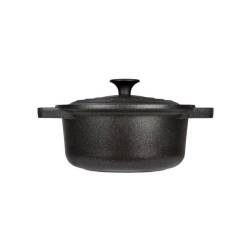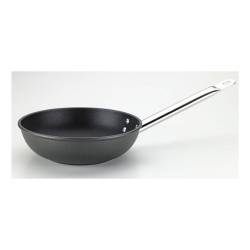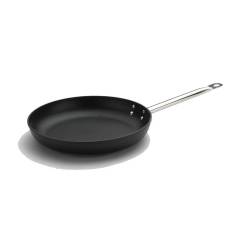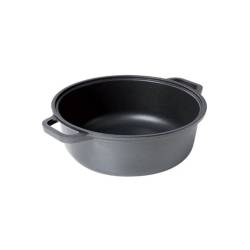Induction cooktops
What type of product to choose based on the diameter of the induction hob?
Induction is a heat source with a glass-ceramic top, under which are coils powered by electricity, which generate a magnetic field transferred directly to utensils that are thus heated.
While induction cooktops have been used abroad for years, both in professional and domestic settings, they have been gaining a foothold in Italy in recent years.
The advantages of induction cooktops
Induction stoves have advantages and disadvantages, but the former outweigh the latter:
- attractive design
- simplified cleaning: a damp sponge is sufficient
- no gas leaks, since it is an electric cooktop
- even cooking: heat distribution occurs evenly
- 90% efficiency: a liter of water takes 2 to 3 minutes to reach boiling point
- controlled temperature: unlike the traditional gas cooktop, you can adjust the degrees
- no risk of burns outside the cooking area, since the glass-ceramic plate outside the concentric zones remains cold
- automatic product recognition: cooking zones are activated only when suitable equipment is present, i.e., equipped with a magnetic bottom.
The diameter of products for induction hobs.
Regarding the last point, there are four parameters to be kept in mind for the suitability of products on the induction hob: material, diameter, coating, and bottom thickness.
Today RGLife focuses on the diameter, an aspect that is often underestimated: any self-respecting data sheet should have indicated not only the top diameter, but also the maximum diameter of the inductor, since the latter must detect the pan (or saucepan, pot, casserole) over the bottom diameter.
To give a concrete example, a 24-cm diameter (top) induction pan should ideally also carry the induction symbol and a number, e.g., 16, to indicate that the pan can be placed on a maximum 16-cm diameter griddle; if the pan is placed on an 18- or 20-cm inductor, it will not heat up.
In the case, this is not a defect of the pan but a basic principle of induction, in which there MUST be a relationship between the inductor and the applied ferritic plate. If this relationship is lacking, the heating mechanism cannot be triggered.
Unfortunately, there is still not enough knowledge about induction, so end consumers would like the product to always respond once put on the inductor, but as we have seen this is not the case.
Induction Resolved
RGmania has an extensive catalog of products for induction hobs; in this case, we suggest those made by Risolì, from the pans to casseroles, low or high, with one or two handles.




